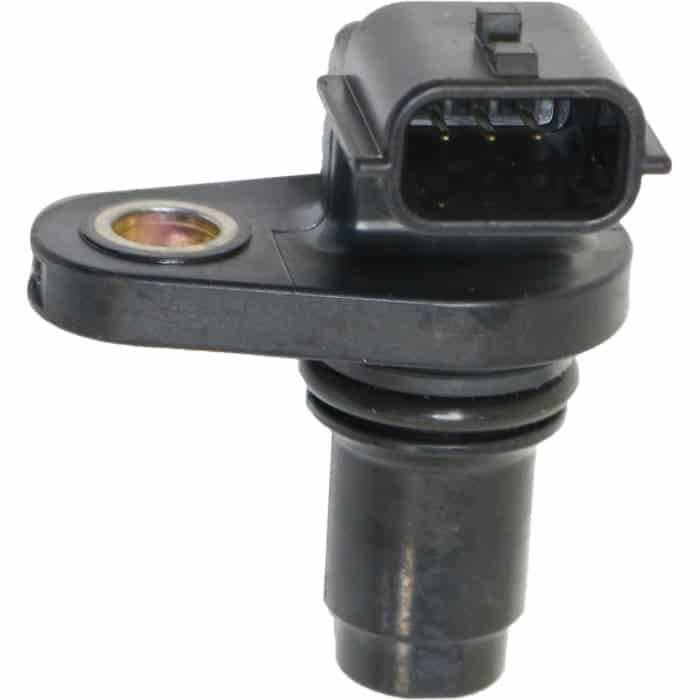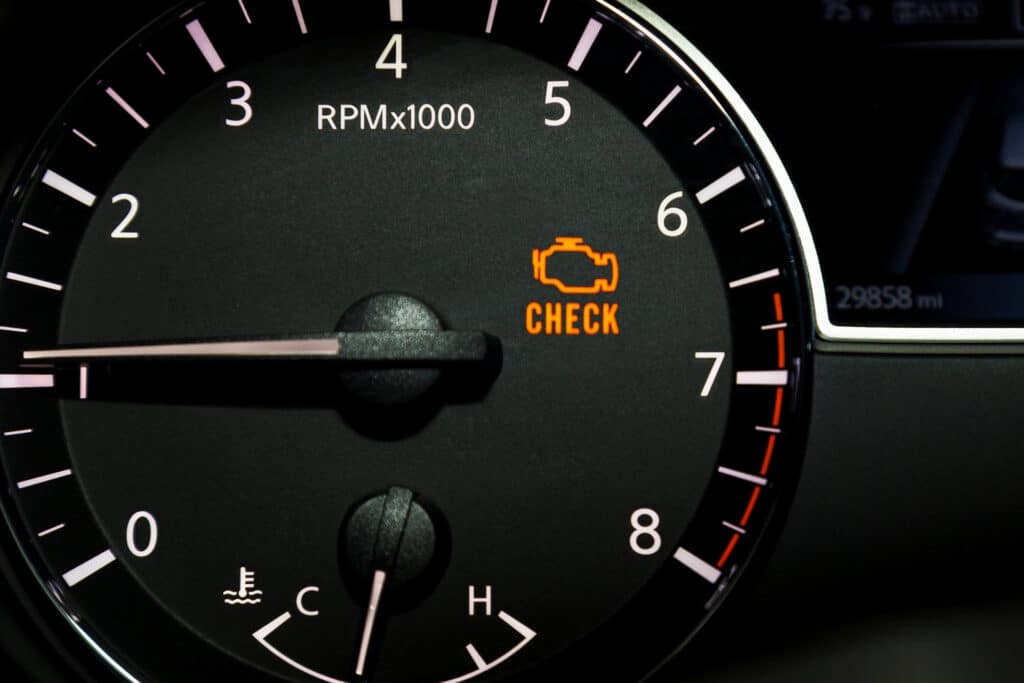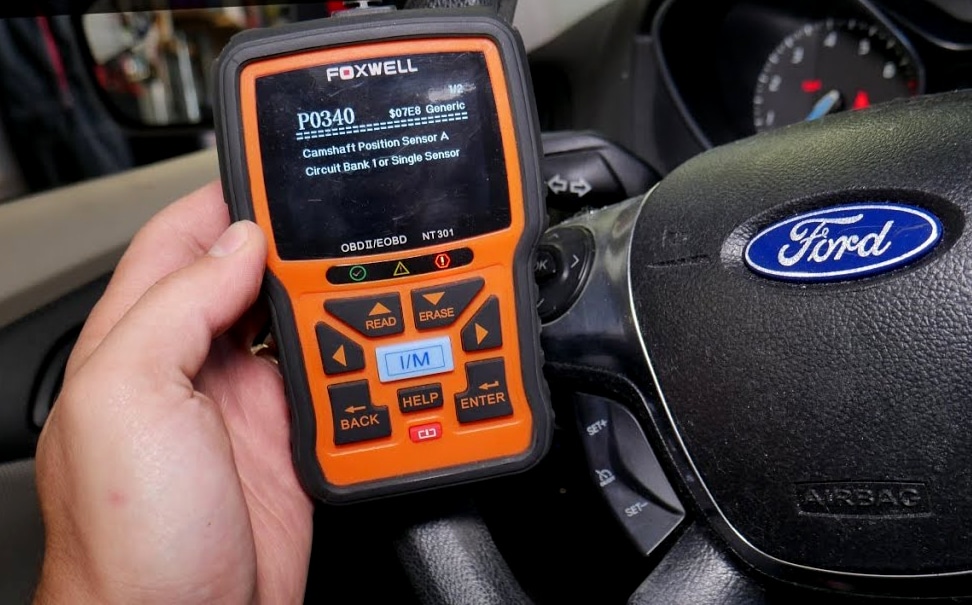Modern-day engines are very sophisticated and run tight tolerances compared to engines from the yesteryears.
This complexity is a result of stricter emissions requirements — an important metric in today’s homologation exercise.
Automakers address these regulatory needs with the help of electrical sensors that run complex algorithms.
They relay information at lightspeed and eliminate the need for many moving parts. To make things better, the margin for error is minute, if not negligible.
One such vital electrical sensor is the camshaft position sensor. It plays an integral role in controlling fuel delivery and ignition timing. Understandably, a lot can go wrong if the camshaft position sensor malfunctions.
These sensors are generally expensive to replace and repairing them requires a fair bit of electrical know-how.
You’d think that automakers would design them to be more robust on account of this, but most sensors don’t last very long.
In this article, we’ll review everything you need to know about camshaft position sensors. We’ll discuss what they do, what happens when they’re about to go bad, and how much they cost to replace.
What Does a Camshaft Position Sensor Do?
The camshaft and crankshaft are two of the most important engine components. The camshaft controls the position of the inlet and exhaust valves, while the crankshaft controls the location of the pistons.

Camshaft position sensors (abbreviated as CMP) monitor the camshaft’s position and inform the engine control module (ECM) or engine control unit (ECU) about when each valve is open and on which cylinder.
This information is extremely important and helps the ECU decide on when and how much fuel to inject into the engine cylinders.
On the other hand, crankshaft position sensors (CKP) are used to monitor the position or rotational speed of the crankshaft.
Together, these sensors relay the information to the engine management system, which accordingly alters the fuel injection, ignition timing, and other engine parameters. You can think of them as engine control units.
There are four types of CMP sensors:
- Magnetic pick-up coils,
- Hall-effect sensors,
- Magneto-resistive element (MRE) sensors, and
- Optical sensors.
Of these, Hall-effect and Magnetic ones are most commonly used in modern-day internal combustion engines.

The camshaft position sensor is mounted near the cylinder head, right opposite to where the timing rotor is attached to the camshaft.
The rotor is designed in a way that one or more teeth are missing, acting as a reference point to the camshaft angle, helping the computer recognize which cylinder is firing.
The camshaft sensor works according to a simple principle, and will always be positioned close to the camshaft’s timing rotor, otherwise called a pick-up ring.
The information is sent as a series of repetitive electrical voltage impulses.
The rotating camshaft (timing rotor) induces a change in the sensor’s magnetic field, creating voltage pulses.
Through the pulse synchronization from the sensor, the ECU determines the position, angle, and speed of the camshaft.
The info, together with the CKP’s data, is used to determine fuel delivery and spark plug ignition (in gasoline engines).
Crankshaft and camshaft position sensors work together to show the computer when the conditions are right for intake, compression, combustion, and exhaust.
Symptoms of a Failing Camshaft Position Sensor

Here are some symptoms of faulty camshaft position sensors that you should look out for:
- No ignition: The first sign of camshaft sensor failure is that your engine won’t start. This is because your ECU isn’t getting any signal from the CMP and it cannot use any other signal instead.
- Check engine light: When you have a faulty CMP, the onboard computer will trip the “Check Engine” light.
- Engine stalling inadvertently: Timing-based engine functions such as spark control and fuel injection depend on signals from the ECU. If the CMP fails, it renders the ECU’s signals unreliable, which might cause misfires and engine stalling.
- Inconsistent acceleration: Erratic idle, choppy throttle, and sudden drops in rpm are some of the signs of a faulty CMP.
- Engine misfire: This is when one of the cylinders does not produce sufficient compression or spark — not to be confused with detonation and pre-ignition. CMP failure is a common culprit.
Many times when the onboard computer receives an erratic signal, the internal logic will understand this as a mechanical problem and will shut down the engine to prevent any damage.
Ironically, the very same sensor may send out no signal or be unplugged, and the engine will still run, albeit poorly.
Wondering what causes the camshaft position sensor to fail? Generally, the causes are extreme heat, a wire fracture, and faulty connector pins.
Sometimes, the sensor may simply become worn out due to the car’s age and mileage.
Troubleshooting CMP Failure

Scanning for the diagnostic trouble code is a good way to confirm your doubts. For that, you’ll need a scan tool. Find one, hook it up to your OBDII port, and run a quick scan.
If there’s a problem, you’ll find the code P0340; camshaft position sensor “A” Circuit Malfunction. This is pretty standard across all the brands.
If there’s no code, do a physical inspection. For all you know, the camshaft sensor might just be gunked up with dirt. Locate the sensor and clean it with contact spray or MAF sensor cleaner, then wipe it with a clean cloth.
In case the symptoms persist, check the wiring harness for corrosion or any other damage. If that checks out okay, make sure the harness pins are tight and there is sufficient electrical contact.
If all these are negative, you’ll need a professional mechanic to diagnose the fault using an ohmmeter or oscilloscope.
Measure the active resistance between terminals — if it’s within the manufacturer’s specifications, the sensor is fine. But if the resistance is lower or higher than required, the sensor needs to be replaced.
The oscilloscope test is more about observing the sensor’s waveforms. Hall effect and Magnetic CMPs exhibit a square wave signal.
If there’s a malfunction, the sensors will form inconsistent patterns with uneven interruptions, one of the most common symptoms of a failing crankshaft sensor or timing rotor.
Often it’s not the sensor but the pick-up ring that’s faulty. This can lead to the computer tripping a code as the sensor is receiving incorrect or broken signals.
Once you’ve confirmed a failed CMP, it’s time to replace the sensor.
Camshaft Sensor Replacement Cost
The cost to replace a camshaft sensor varies between brands. A Mercedes Benz E320 camshaft position sensor costs between $152 and $283 on average. Whereas a CMP sensor on a Corolla costs $77, excluding labor.
On a general note, the sensor will cost somewhere between $50 and $100. Installation and labor should run from $40 to $200 depending on the location.
Parts are fairly easy to swap on a Toyota than on a Mercedes, considering there is more working room.
Concluding Thoughts

You can also do it yourself, it’s not intimidating as long as you know your way around an engine.
Working on a small 4-cylinder Nissan SR20DET is easier than say, a Toyota 1UZFE V8. Packaging is pretty tight in most modern cars, so you’ll probably need to take a few parts first to access the sensor you’re replacing.
If you’re still unsure, there are several tutorials on how to replace the camshaft position sensor all by yourself.
However, bear in mind that it’s important to leave a proper gap between the sensor and the timing rotor. If you don’t, it defeats the purpose of having a new sensor installed.
Have you ever had to troubleshoot faulty camshaft position sensors? Let us know your experience by leaving a comment below.
If you found this article informative, consider sharing it with your friends on Reddit or Facebook. We appreciate your support!

